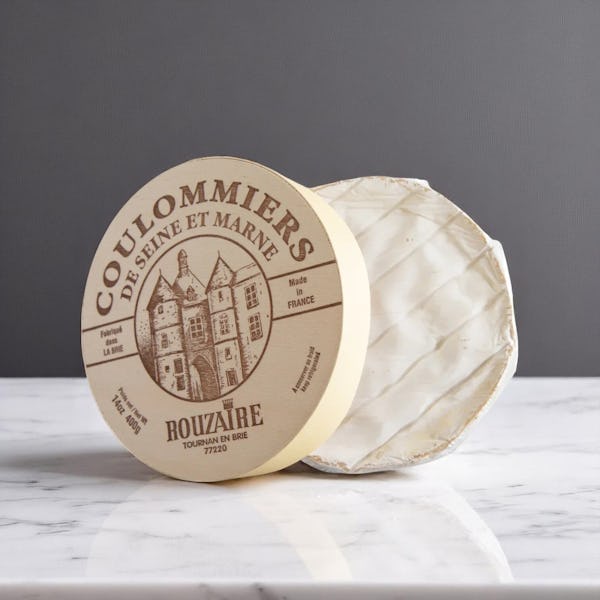
Coulommiers Cheese
Creamy indulgence for gourmands
Flown in fresh just for you
This product is on preorder and the next shipment is scheduled to arrive on Tuesday Jan 13 , 2026. Your delivery will be dispatched as soon as the product arrives.
Tasting Notes of the Curator
Coulommiers stands as a quiet triumph among soft cheeses—less known than its Brie relatives, but no less magnificent. Hailing from the Seine-et-Marne region in France, this cheese charms with its ivory paste and snow-white rind, unfolding a sensory experience that is both lush and nuanced. Upon slicing, a dense, creamy heart emerges, releasing aromas of mushrooms, earth, and fresh cream. The texture is silken, almost spoonable at peak ripeness, with a lingering buttery finish.
Unlike Brie, which tends to mellow across the palate, Coulommiers concentrates its notes into a more compact and assertive profile. It’s slightly tangy, subtly nutty, and delivers a flavor depth that evolves beautifully as the cheese matures. There is a cultivated rusticity in every bite, reminiscent of hay, barnwood, and cultured cream—satisfying for seasoned palates and still inviting for the curious.
Pairings and Suggestions
Coulommiers elevates even the simplest moments. Serve it just shy of room temperature for optimal bloom.
Pair with crusty baguette or pain de campagne.
Drizzle with acacia honey or layer with fig jam for sweetness.
Match with a light red Burgundy, Beaujolais, or a sparkling cider.
Slice onto a warm croissant for a decadent breakfast.
Add to a cheeseboard alongside cured meats, cornichons, and almonds.
It also melts wonderfully, making it an indulgent choice for baked dishes or atop roasted vegetables.
A Name That Almost Disappeared
Once nearly lost to time, Coulommiers was traditionally made by farmers for personal use—less for export, more for home and market tables. Its revival is a small victory of artisan pride and regional heritage. The cheese takes its name from the town of Coulommiers, and while it shares a family lineage with Brie, its smaller size and fuller taste made it the secret favorite of many fromageries in Paris. Offering it today is a nod to revival, authenticity, and an appetite for forgotten wonders.
Storage Instructions
Keep refrigerated between 2°C to 6°C. Once opened, wrap loosely in wax paper or cheese paper to allow it to breathe, and consume within 5–7 days. Avoid airtight plastic wrap as it stifles the rind.
